Gross
Gross Electronic Calculators Ltd., of Brighton, Sussex, was a subsidiary of Gross Cash Registers Ltd., which was a major manufacturer of mechanical cash registers, and also made mechanical calculators.
Gross manufactured and marketed electronic calculators in the 1970s. In February 1974 "The Times" reported[1]:
"Gross Cash Registers of Brighton expects to build up to a production rate of about 25,000 calculators a year within the next three months. The company is continuing to concentrate on desktop machines and in particular on
printing versions.
Gross has a particular experience in printing mechanisms and obtains its micro-circuits from the United States. The company's current range of five desktop calculators covers a price
range from £65 to £210, and about half its total is for export."
In May 1974 "The Times" reported of Gross[2]:
"Recently, a factory has been set up in Eire for electronic
calculator production, freeing space and personnel for the switch to electronic [cash-register] machines."
See the bottom of this page for a history of Gross Cash Registers Ltd.
Known Gross models are:
- Gross 681 - Hand-held
- Gross 2031 - Desktop
- Gross 2131 - Desktop
- Gross 4151 - Desktop
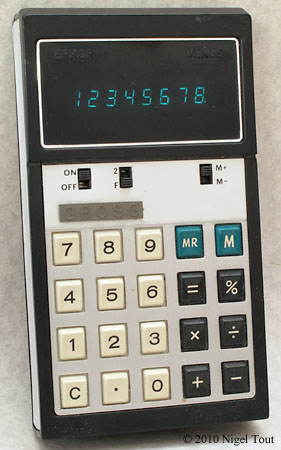
Gross 681
Hand-held calculator.
8 digits, blue vacuum-fluorescent display. Has switch to select floating point or fixed 2-decimal places.
4 function, %, memory.
80 x 146 x 26 mm (3.1" x 5.75" x 1.0").
The label on the back says:
Distributed by GROSS Electronic Calculators Ltd., Brighton, England.
Assembled in Mexico primarily of U.S.A. parts.
This calculator was manufactured by Rockwell and labelled for distribution by Gross.
Made about 1974/5.
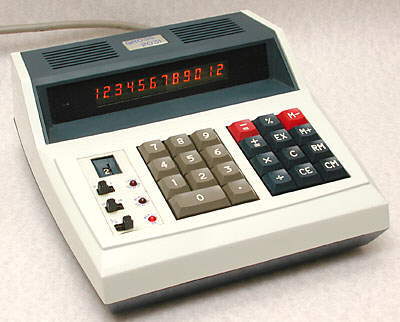
Gross 2031
AC powered desktop calculator.
Display is 12 digits, amber gas-discharge (maybe Burroughs Panaplex).
Integrated circuits - FDY 7023P and FDY 7022P, manufactured by Electronic Arrays Inc. of Mountain View, California, U.S.A., here date coded mid-1973.
4 function, %, memory. Has, fixed decimal point, setable by rotary switch.
209 x 234 x 96 mm (8.2" x 9.2" x 3.8").
Made by Gross Electronic Calculators Ltd. about 1973.
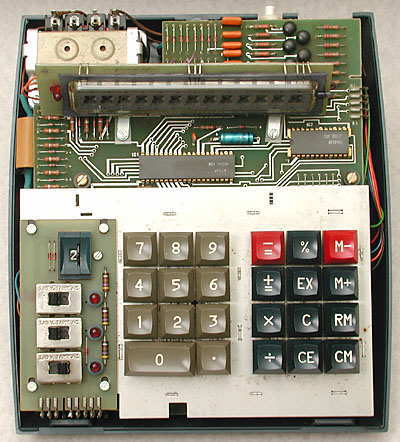
With the top cover removed.
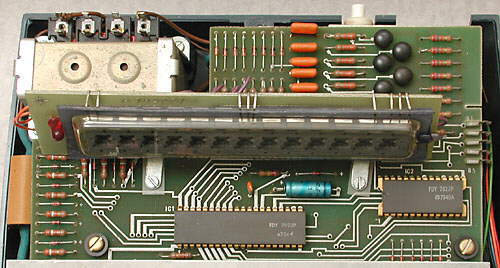
The circuit board, showing the amber gas-discharge display and the FDY 7023P and FDY 7022P integrated circuits manufactured by Electronic Arrays.
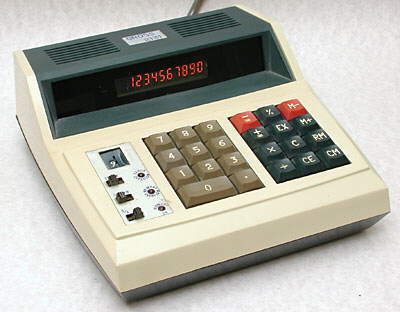
Gross 2131
AC powered desktop calculator.
Display is 10 digits, amber gas-discharge.
Integrated circuits - FDY 7023P and FDY 7022P, here date coded mid-1973.
4 function, %, memory. Has, fixed decimal point, setable by rotary switch.
209 x 234 x 96 mm (8.2" x 9.2" x 3.8").
Made by Gross Electronic Calculators Ltd. about 1973.
The 2131 here is identical to the 2031 above except that it has only a 10-digit display rather than 12-digit.
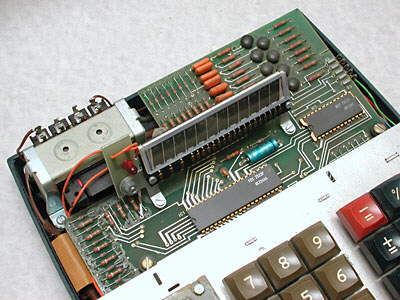
The circuit board, showing the amber gas-discharge display and the FDY 7023P and FDY 7022P integrated circuits.
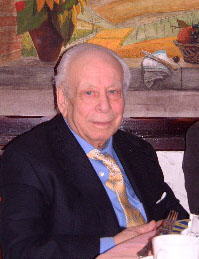
Gross Cash Registers Ltd. was founded by the brothers Henry and Sam Gross. The following information provided by Henry Gross was kindly sent by Michele Gross, the wife of Sam Gross's son, Terry Gross.
The late Henry Gross.
The company was founded by the brothers Henry and Sam Gross, who had studied engineering at Kingston College, and had worked at Lagonda Motors for several years. They became interested in cash registers when their father, who owned a chemists shop, had had an argument with the man selling him the shop as the vendor had promised to leave behind the cash register, but had failed to do so. Lewis Gross was annoyed with the vendor, and his sons had said they would try to make him a cash register to make up for it.
So in the early 1930's Sam and Henry set about trying to invent a cash register that was more conducive to mass production. Although World War II put a halt to things for a while, after the end of hostilities, in 1946, they began production of the cash register and adding machines.
At this time they were based in Cross Lane, Hornsey, north London. Sales were good immediately, and so they moved to the North Circular Road to a bigger factory where they stayed for about 5 years. They also had a showroom in Baker Street in central London.
In the late 50's the company moved to a very large site in Brighton called the Hollingbury Estate, where they employed over two thousand people and exported the machines to a multitude of countries abroad.
In Britain the changeover from the old £sd currency to decimal £p currency was scheduled for early 1971. Henry remembers very well the months he spent trying to invent a cash register mechanism that easily switched from £sd to £p, so that companies using them could instantly change over on the big day. He stayed up all through the night for months trying to figure it out and eventually succeeded. He is most proud of this as no one else had managed to invent this, even the nationals, and no one managed it afterwards either. This invention resulted in huge orders for their company.
Sam Gross was honoured with the award of the OBE ("Order of the British Empire") for services to export in about 1972.
The company continued trading into the 1970s and the introduction of electronics into the cash registers and calculators. The first electronic calculator was lauched about 1972, after the change to decimal currency in Britain. The electronics of the calculators was based on the suggested circuitry of the integrated circuit manufacturer, but Gross was responsible for the mechanical design. However, like many other companies at this time, it was adversely affected by competition from the Japanese and their electronic machines, prompting the sale of the company to Chubb.
From humble working class beginnings these two boys had become very successful and wealthy.
References:
British calculators
Vintage Calculators
© Text & photographs copyright Nigel Tout 2000-2019 except where noted otherwise.